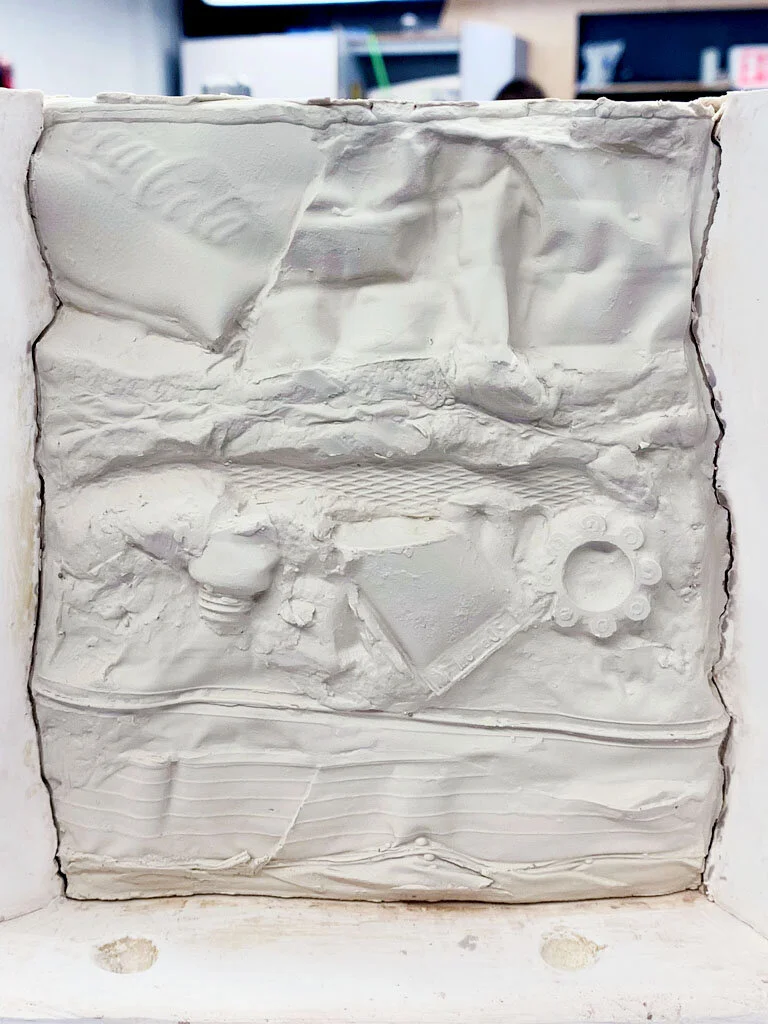
Anthropogenic Fossils

Anthropogenic Fossils
A Geological Epoch in the Age of Man
Thorough understanding in plaster mold making, slip casting batch production methods, material life cycle analysis, and ceramics.
“We live in an age where objects made for a moments convenience today will last lifetimes.”
— Mikayla Bruder”
Anthropogenic Fossils visualizes the ironic cycle of fossil fuels as a material being used and discarded. Beginning as decayed and compressed organic compound, crude oil is extracted and processed to produce plastic. After taking millions of years to form, this material now finds itself returning to the ground in plastic form as a man-made pollutant. Their end-of-life results in being buried or washed away in environments that lend extreme pressure, creating ideal conditions for fossilization through the depressions of our plastic trash; centuries after we are deceased. Bruder’s speculative future extractions of our Earth’s bedrock are a shocking reality of irresponsible consumption and the permanence of our actions.
Epoch: a defining point in history that marks an era. Like the adolescent years of our human lives, an epoch is represented by a change in notable characteristics. We are living in the Anthropocene, the current geological period in which our human decisions are impacting our planet so severely it is cascading a change in our global climate, physical landscapes and ecosystems. Single-use plastics are the preservable forms that are now common in our natural environments. It is what is buried in landfills, floats atop of waterways, and sinks to the bottom of our ocean floors; all conditions for nature’s oldest form of record keeping, fossilization.
Fossils demonstrate a historical succession of form. A record of life.

This speculative visualization intends to raise the question, “what will our fossilized mark in the Age of Man be?” and, recognizing how the once raw material of crude oil, which is made from natural fossilized matter is extracted, refined, given new shape, and buried once again.
Fossilizing and Slip Casting
Slip casting is a very similar process to that of fossilization. For this reason it was a fitting decision conceptually, and also fulfilled a reliable fabrication method to move into batch production.
Positive of a shape (needed for fossilization and slip casting)
Depression (fossil) / mold (slip casting)
Sediment fills negative (organic material) / slip deposit (from the earth)
Rock formation (Extreme compression overtime) / firing (slip casting)

























